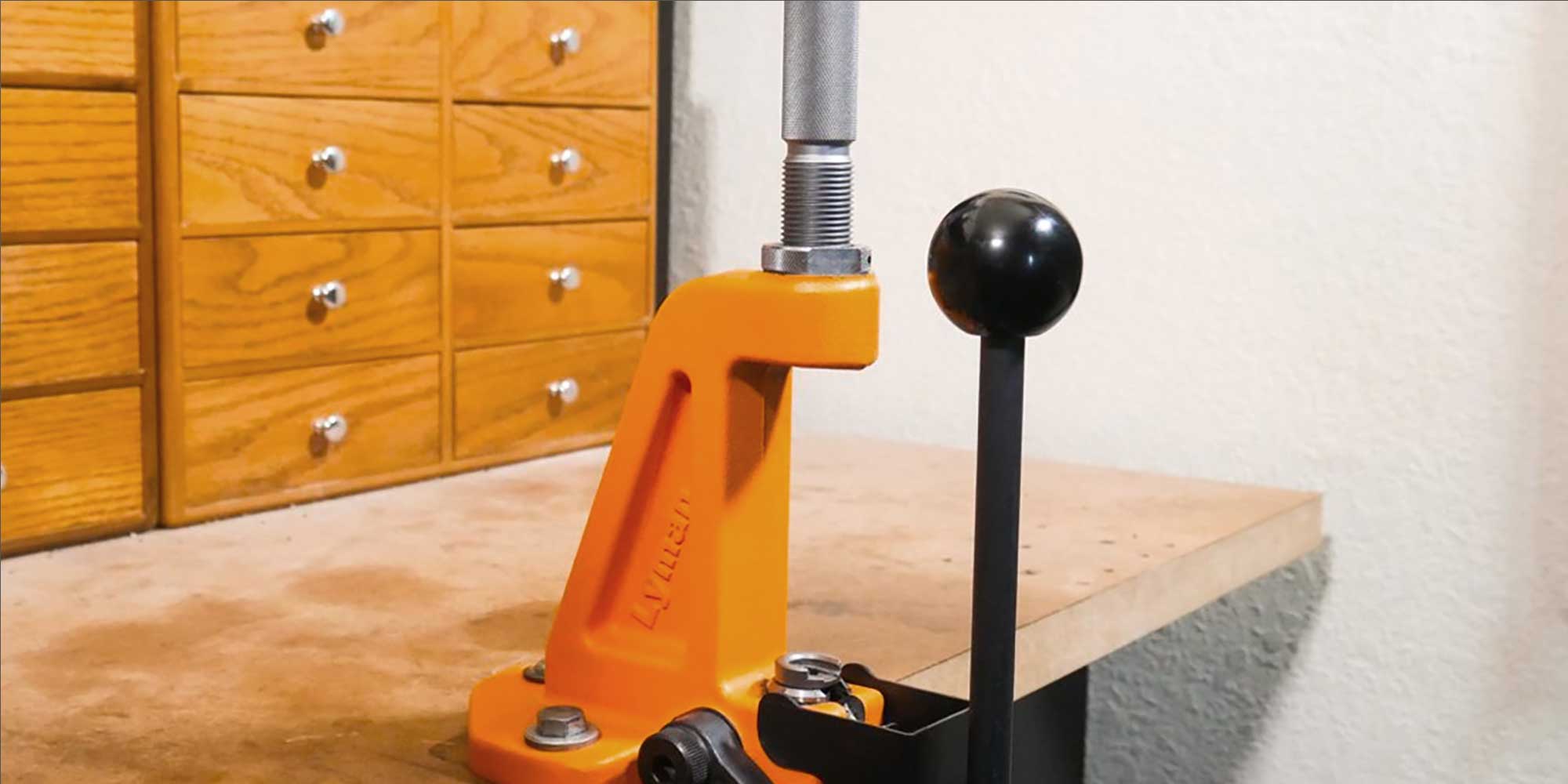Setting Up a Reloading Bench

Before an aspiring handloader can get started loading ammunition, they will need a dedicated workspace. After all, nearly every press that you can buy will require some kind of hard surface that it can be mounted to. Reloading benches can either be purchased already made, or constructed fairly simply using basic power tools.
Building vs Buying
If a person already has the knowledge and tools for the job, building a reloading bench could be an economical way to build a workspace for reloading ammo. Building your bench will be much cheaper than buying one already constructed, and users will be able to construct it to their exact desired specifications. As well, there are plenty of blueprints available online for building reloading benches. That being said, most reloaders choose to purchase pre-constructed reloading benches. So, in this part of the guide, we will be looking at some considerations for choosing a reloading bench.
What to Look for in a Bench
In truth, most reloading benches will be largely similar in their base functions. But, within those functions, there are various aspects of a bench to consider before making a purchase. Perhaps the first thing to consider is the size of the bench. You don’t want a bench that is too large for your ammo room, and you certainly don’t want a bench that is too small to work on. You should also think about the height of the bench. Your height needs will mostly be determined by whether you want to sit or stand while reloading. Some users may have trouble sitting for long periods of time, and could need a bench closer to waist height. Lastly, consider the storage options offered by the bench. Drawers, cabinets, and shelves are all commonly found on reloading benches. Each of these storage options offers its own advantages and disadvantages, which we will cover further in this section.
Size
If you have as much space as you need for a reloading bench, we suggest getting the largest bench available. Reloading ammunition requires a lot of gear, equipment, and accessories, so you want to ensure that you have adequate room to store all of these pieces. Measure your space and invest in the largest bench possible that makes sense.
Height
Reloading can be a tedious task. Chances are, you will regularly spend several hours at a time standing (or sitting) at your reloading bench. For this reason, most reloaders look for sitting-style benches. In recent years, standing benches have grown in popularity, but the vast majority of benches available on the market are still meant for sitting. As well, by using a sitting bench, it is possible to repurpose old desks or tables into makeshift reloading benches.
However, a standing-height reloading bench has its fair share of advantages to consider. Standing benches allow the user to be more mobile and better utilize as much workspace as possible. For users with back problems, a standing height bench may be an ideal option.
Storage Options

Once your size and height requirements are fulfilled, you should consider what types of storage capabilities you are looking for. Organization is a big key to properly reloading your ammunition, so it’s important that storage needs are met. Most reloading benches will have drawers, cabinets, and/or shelves. While you will often find benches with all three options, some may be limited to just one type. Other benches may not even come with any storage options. If this is the case, it will be left to the user to build or purchase an external storage system for reloading equipment and supplies.
Drawers
Reloading benches with many drawers are not particularly common, but if you are repurposing an old desk or table, this could be your only option. Drawers serve as a solid form of storage for certain reloading components, but they have limited storage capacity and can sometimes get cluttered quite quickly.
One advantage to drawers is they often come with locking mechanisms. This means that a drawer storage setup could be useful for keeping expensive or dangerous items safely away from small children or family members.
Shelves
Shelves are one of the most popular storage methods on reloading tables and benches. They offer larger storage capacity than drawers, and are easy to keep clean and organized. Items kept on shelves are in plain view and can be grabbed without fumbling through locking mechanisms or other hardware. The simpler you can make the reloading process, the better. As well, shelves can easily be built with even the most basic tools. So if you buy a bench without any type of storage, shelves can be constructed very easily.
Unfortunately, shelves are not a very secure way to store equipment. For some users, this may not be a problem. If your reloading room is away from strangers and family or simply locked shut, security is not going to be a huge issue. However, keeping gear on shelves leaves them out in the open where they are easy to access by anyone. This should be considered if you are storing dangerous or valuable items.
Cabinets
In some ways, cabinets provide the benefits of both shelves and drawers. They are often lockable for extra security, but their storage method is essentially identical to shelves. If you are looking to stay ultra-organized and ultra-secure, cabinets are a great storage solution.
That being said, cabinets are more expensive than standard shelving. Cabinets are also much more difficult to build if you are looking to add storage to your existing workbench. Cabinet doors can also be obtrusive and get in the way when opening or closing. If you’re looking to maximize space, the need to keep things out of the way of swinging cabinet doors is not going to be helpful. A cabinet that is on a bench is going to be basically inaccessible if anything is sitting in front of it.